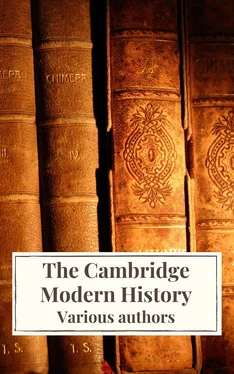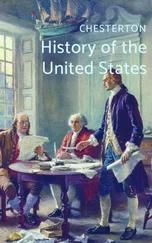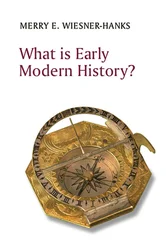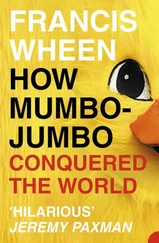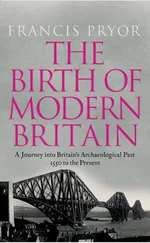R. Nisbet Bain - The Cambridge Modern History
Здесь есть возможность читать онлайн «R. Nisbet Bain - The Cambridge Modern History» — ознакомительный отрывок электронной книги совершенно бесплатно, а после прочтения отрывка купить полную версию. В некоторых случаях можно слушать аудио, скачать через торрент в формате fb2 и присутствует краткое содержание. Жанр: unrecognised, на английском языке. Описание произведения, (предисловие) а так же отзывы посетителей доступны на портале библиотеки ЛибКат.
- Название:The Cambridge Modern History
- Автор:
- Жанр:
- Год:неизвестен
- ISBN:нет данных
- Рейтинг книги:4 / 5. Голосов: 1
-
Избранное:Добавить в избранное
- Отзывы:
-
Ваша оценка:
- 80
- 1
- 2
- 3
- 4
- 5
The Cambridge Modern History: краткое содержание, описание и аннотация
Предлагаем к чтению аннотацию, описание, краткое содержание или предисловие (зависит от того, что написал сам автор книги «The Cambridge Modern History»). Если вы не нашли необходимую информацию о книге — напишите в комментариях, мы постараемся отыскать её.
The first series was planned by Lord Acton and edited by him with Stanley Leathes, Adolphus Ward and George Prothero.
The Cambridge Modern History Collection features all five original volumes:
Volume I: The Renaissance
Volume II: The Reformation, the End of the Middle Ages
Volume III The Wars of Religion
Volume IV: The 30 Years' War
Volume V: The Age of Louis XIV
The Cambridge Modern History — читать онлайн ознакомительный отрывок
Ниже представлен текст книги, разбитый по страницам. Система сохранения места последней прочитанной страницы, позволяет с удобством читать онлайн бесплатно книгу «The Cambridge Modern History», без необходимости каждый раз заново искать на чём Вы остановились. Поставьте закладку, и сможете в любой момент перейти на страницу, на которой закончили чтение.
Интервал:
Закладка:
It is dangerous to attempt to characterise the work of whole centuries in single phrases; but there are cases, and this seems to be one of them, where the progress of a movement can be marked out with approximate accuracy, and its stages defined, in such a way. The three centuries, from the fifteenth to the seventeenth, with which we have been principally occupied, had each its special form of contribution to the movement which we have called the Christian Renaissance. The fifteenth century was the age of collection: the documents were brought together, and the great libraries formed. The sixteenth century was the age of publication. What had been recovered was given to the world by the great scholar-printers. And the seventeenth century was the age of criticism: with the documents now before them, men settled themselves down to the improvement of texts and the elucidation of subject-matter, to an extent which had been impossible for their predecessors.
The names of Niccoli and Poggio, of Erasmus and de la Bigne, of Ussher and Valois, give a fair indication of the several activities which seem to us to have characterised the periods we have passed under review.
CHAPTER XVIII. CATHOLIC EUROPE, by William Barry
SO far back as the Council of Vienne in 1311, William Durandus, nephew of the “Resolute Doctor,” when commissioned by Clement V to advise him on the method of holding that assembly, had answered in a volume which we may still consult that “the Church ought to be reformed in head and members.” The phrase was caught up, was echoed during the Great Schism at Pisa (1409), in the stormy sessions of Constance (1414-18), at Basel (1431-49), and to the very end of the fifteenth century. It became a watchword, not only in the manifestos of French or German princes at issue with the Apostolic See, but on the lips of Popes themselves and in official documents. But though searching and sweeping, the formula had its limits. Reformation was conceivable of persons, institutions and laws; it could not, on Catholic principles, be admitted within the sphere of dogma, or identified with Revelation; it must leave untouched the root-idea of medieval Christendom that the priesthood possessed a divine power in the Mass and in the Sacraments, conferred by the episcopal laying-on of hands. It affected nothing beyond discipline or practice; and only that portion of the Canon Law might be revised which was not implicitly contained in the Bible or in the unanimous teaching of the Fathers as expounded by the Church. Foxe of Winchester, writing to Wolsey in 1520, well defined the scope of amendment; he had found, he says, that everything belonging to the primitive integrity of the clergy, and especially to the monastic state, was perverted either by dispensations or corruptions, or else had become obsolete from age or depraved by the iniquity of the times. Thus even Alexander VI, startled into momentary penitence by the murder of his son, the Duke of Gandia, appointed a committee of Cardinals in 1497, to draw up a scheme for the reformation of morals which, he declared, must begin with the Roman Curia. The mere summary of abuses to be corrected, or of better dispositions to be taken, in the government of the Church, extends to one hundred and twenty-eight heads, as set forth in the papal Letters beginning, “In apostolicae sedis specula.” Julius II, addressing the Fifth Lateran Council (1512) reckons among its chief objects ecclesiastical reform; before its opening he had named a commission which was to set in order the officials of his Court. Leo X, in 1513, accepted the rules which had been laid down by these Cardinals with a view to redressing the grievances of which complaint was made, and published them during the eighth session of Lateran as his own. Nevertheless, not until the Fathers at Trent had brought their labours (1545-64) to an end did the new discipline, promulgated by them in twenty-five sessions and explicitly termed a reformation, take effect in the Roman Church. By that time the Northern peoples had fallen away; Christendom was rent into many pieces, and the hierarchy, the religious Orders, and the Mass, had been abolished wherever Lutherans or Calvinists prevailed.
It does not enter into the scope of the present chapter to enlarge upon a subject treated elsewhere in this volume,—the causes which led up to the Protestant Reformation. But, as was made clear by the rise of the Jesuits, the decrees of Trent, the acts and virtues of a multitude of Saints, the renewed austerity of the papal Court, and the successful resistance to a further advance on the part of Lutheranism in Germany, and of Calvinism in France and the Belgic Provinces, there also existed a Catholic Reformation, within the Church, not tinged with heresy, but founded on a deeper apprehension of the dogmas in dispute, and on a passionate desire for their triumph. In one sense, this great movement might be described as a reaction, since it aimed at bringing back the past. In another, it was merely a development of principles or a more effectual realisation of them, whose beginnings are discernible long before Trent. Thus we may regard the fifteenth century as above all an era of transition. It exhibits violent contrasts, especially among the high clergy and in religious associations, between a piety which was fruitful in good works and a worldliness which has never been surpassed. Corruption on a scale so wide as, in the opinion of many, to justify revolt from Pope and bishops, was matched by remarkable earnestness in preaching necessary reforms, by devotion to learning in the service of religion, by an extraordinary flow of beneficence, attested by the establishment of schools, hospitals, brotherhoods, gilds, and asylums for the destitute, no less than by the magnificent churches, unrivalled paintings, and multiplied festivals, and by the new shrines, pilgrimages, miracle-plays, and popular gatherings for the celebration of such events as the Jubilees of 1475 and 1500, which fling over the whole period an air of gaiety and suggest that life in the days of the Renaissance was often a public masquerade.
Catholic tradition, in the shape of an all-pervading and long-established Church, towered high above the nations. It was embodied in a vast edifice of laws. It kept its jurisdiction intact, its clergy exempt, and held its own Courts all over Christendom. It owned from a fifth to a third of the soil in mortmain. It had revenues far exceeding the resources of kings, to which it was continually adding by fresh taxation. It offered enormous prizes to the well-born in its bishoprics, abbacies, and cathedral Chapters, which carried with them feudal dominion over lands, serfs, and tribute-yielding cities. It opened a career to clever ambitious lads of the middle and lower class. Within its cloisters women might study as well as pray, and rule their own estates, wielding the crozier and equalling prelates in dignity and power. The Church, too, maintained her pre-eminence, though shaken once and again, in the old Universities, at Paris, Oxford, and Bologna, while founding new seats of learning at Louvain (1426) or along the Rhine; as far east as Ingolstadt (1472) or even Frankfort-on-the-Oder (1506), and as far south as Alcalä (1499). Her authority was still strong enough to put down the Hussites for a time, though not without conceding to them points of discipline. It showed no dismay at the light which was dawning in humanism. And it gave back to ruined and desolate Rome the Augustan glory of a capital in which letters, arts, manners, attained to a fulness of life and splendour of expression, such as had not been witnessed in Europe since the fall of the Empire.
From the days of Nicholas V down to those of Leo X, Rome was the world’s centre. The Popes held in their hands the key of religion; they aspired to possess the key of knowledge. Along every line of enterprise and from every point of the compass, except one, they were visible. They would not dedicate themselves to the long-sought reformation in head and members, although they allowed its necessity again and again in the most emphatic terms. The plans which were laid before them by ardent churchmen like Cesarini we shall consider as we proceed. But they declined to take those measures without which no lasting improvement of the Curia was to be anticipated. They were loth to summon a representative Council; they refused to cross the Alps and meet the German people, or to listen when it drew up its grievances in formal array. Had the Fifth of Lateran fulfilled its task, instead of leaving it to the Council of Trent half a century later, the Diet of Worms might have never met, and Luther would perhaps have lingered out his years in a cell at Wittenberg.
Читать дальшеИнтервал:
Закладка:
Похожие книги на «The Cambridge Modern History»
Представляем Вашему вниманию похожие книги на «The Cambridge Modern History» списком для выбора. Мы отобрали схожую по названию и смыслу литературу в надежде предоставить читателям больше вариантов отыскать новые, интересные, ещё непрочитанные произведения.
Обсуждение, отзывы о книге «The Cambridge Modern History» и просто собственные мнения читателей. Оставьте ваши комментарии, напишите, что Вы думаете о произведении, его смысле или главных героях. Укажите что конкретно понравилось, а что нет, и почему Вы так считаете.
